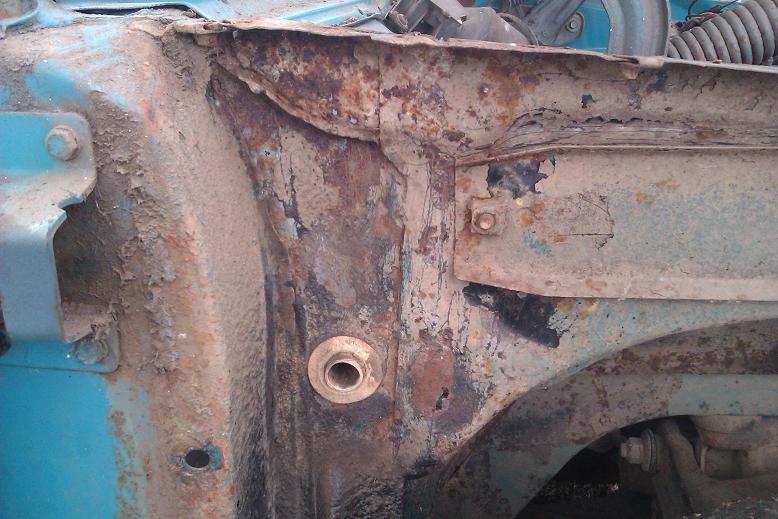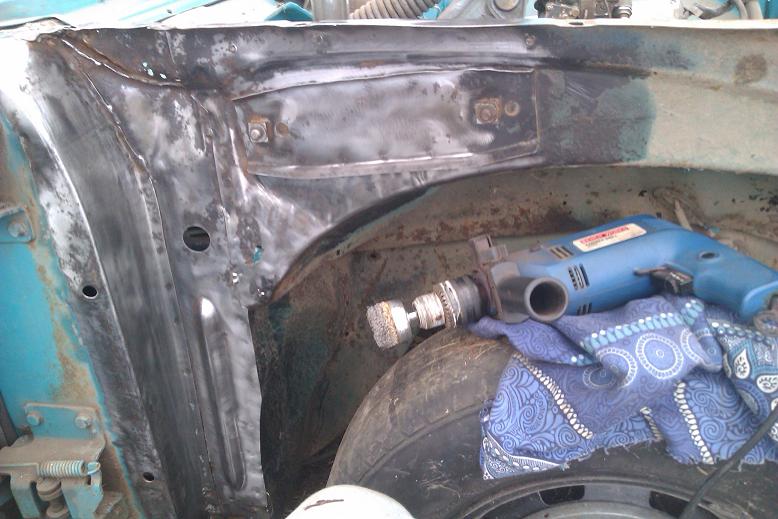cheers fellas

and you were right about the etch primer as a good anti rust till paint choice.
reading threads am aware there are many varied personal choices that are preferred, but got a response am choosing to go with,
re posting here for other people searching the subject if they choose to use.
thanks all
--------------------------------------------------------------------------------------------------------------
Many people will have many & varied opinions on this subject, but I'll offer mine if it helps.
Once I've removed any & all paint, primer & body filler back to steel, I'll metal finish any repairs as best as possible. That means dress up any dents & weld in any repair sections needed.
I guide coat bare metal panels with GMH black & run a speed file with P120 to assist me in finding high & low spots in the panel.
I also trial fit each panel to maintain fit & alignment during the repair process. Nothing worse than welding a lower section on a guard, then finding out after it has been painted that it doesn't line up properly.
Once I'm happy with the metal finish of the panel, the next step will be to treat the bare steel with a acid based rust remover such as deoxidine. Use a Scotchbrite pad soaked in deoxidine to scrub the panel. Before it dries, wipe off with a damp rag, followed by a clean dry rag.
Using compressed air, blow the panel off dry & using dry P240, sand the panel to remove the deoxidine residue film. Wipe over panel with white spirits & dry clean rag, the apply a epoxy urethane or etch primer. This will seal the panel from airborne moisture. I apply any body filler over the top of the etch primer, after "keying" it with P180 or P240 dry sand paper.
Once I've finished any filler work, I apply another coat of epoxy primer followed by three to four coats of high build primer. This will seal the panel & repairs, I've left panels like this for a few months at a time, but keep them away from moisture as primers are porous, designed to "soak" up the top coats, so will soak moisture too.
I've left fully primed cars for up to twelve months before blocking & painting, but again, keep them in a dry enviorment away from moisture.
Once the whole car is in primer, I generally prep the apertures for paint & "edge" them out in the final top coats before fitting the panels back to the car.
I guide coat the whole car & block back the exterior with all panels on. Once I've finished blocking the exterior, I use a damp rag to wipe over each panel to check for straightness etc.
If all checks out OK, the car is ready to be masked & top coat painted.
Some points to remember, don't leave deoxidine treated panels for long before applying etch primer. Make sure to remove the filmy residue it leaves completely.
Cleaniness is very important, primers & paint won't stick to dusty or dirty panels, the more effort you put into the initial preparation, the better the final product will be.
Finish off any body filler as smooth as possible. I generally finish off with P240, no coarser than P180. Any coarser, the primers can "sink back" over time highlighting the sanding scratches.
I also use guide coats when blocking body filler as you would when blocking primers.
I only use prepsol for cleaning panels prior to painting. keep it away from body filler.
-----------------------------------------------------------------------------------------------------------
![]() .
.















